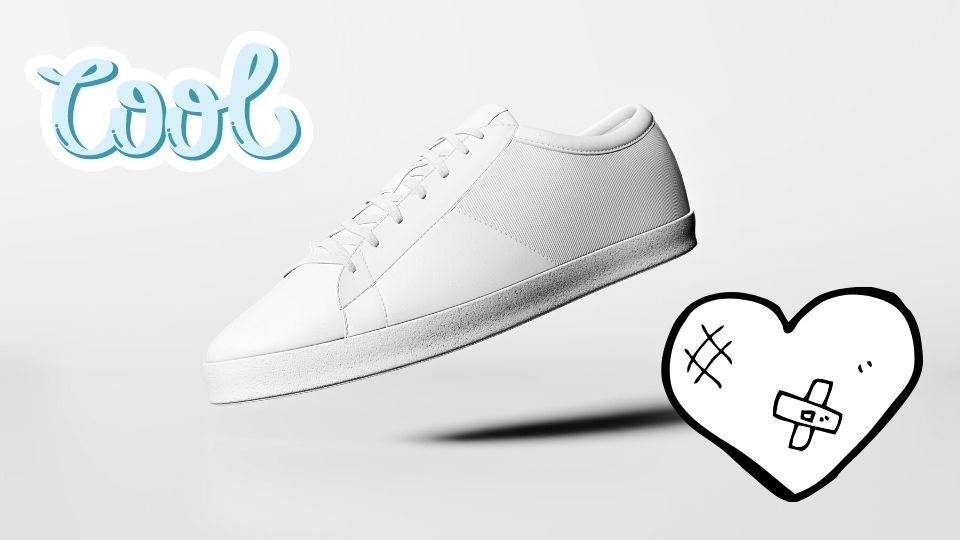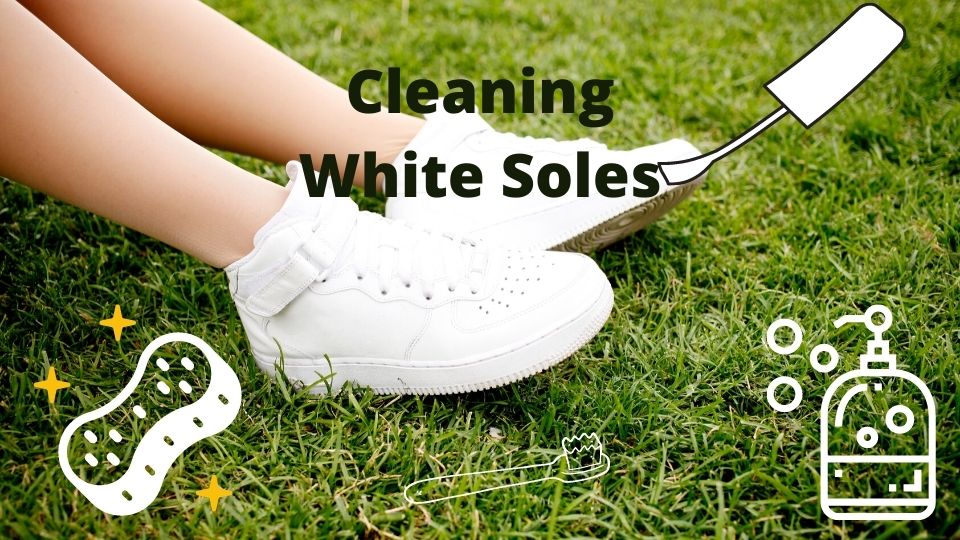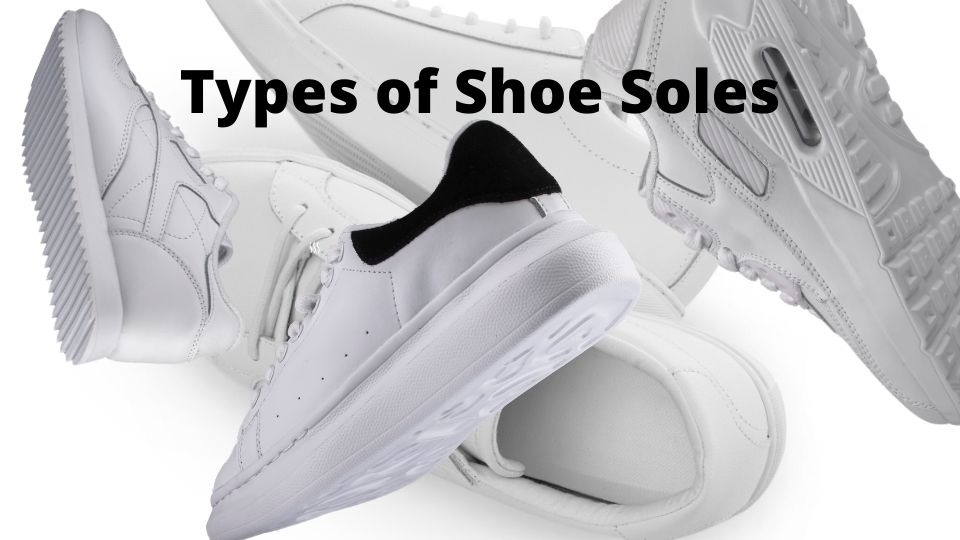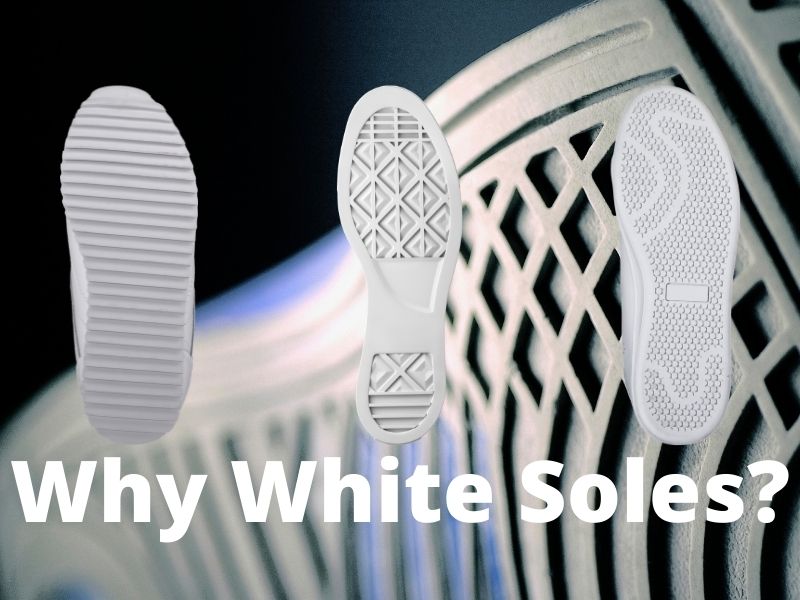Almost everyone has that one friend or family member that is obsessed with shoes. They may only wear a few pairs, yet their closet is overflowing with pair after pair. Most likely, that closet of shoes is worth the equivalent of a down payment for a Ford Focus. What each pair has in common is that they all have white soles.
Why do shoes have white soles? Shoes have white soles because it is cheaper to manufacturer the white color rather than adding in different colors. The rubber is made from a softer material, lower in density, contains more air, therefore weighs less, and costs less.
More shoemakers are designing their shoes to mimic the converse style shoe, the dark material on top with the white bottom. My cousin-in-law and brother-in-law are both shoe fanatics, owning more shoes than their wives, and both are managers of their local shoe stores. I sat down with them and had a discussion about shoes and why they have white soles.
The Positives of Having Shoes with White Soles

There are reasons why you would want to have shoes that have white soles; however, not all positives are on the side of the consumer in this matter. Shoe manufacturers understand our shopping habits, and they are going to design what we like while also making sure they are holding onto the aces.
It also is pure science; a white sole will reflect the light off, and therefore the shoe is cooler while a dark sole will absorb the light and the shoe warmer.
Most of the time, we are not walking around on dirt or grass, but we are walking on concrete and asphalt. These surfaces cause more wear and tear on shoes, and these surfaces are going to be picked up on our shoes.
A white sole is going to look dirty quickly, which is going to activate our brain to think they are no longer worthy of being worn. Shoe manufacturers count on this psychology in hopes that we replace our shoes sooner than they need to be based on pure aesthetics.
A positive that is all about the consumer is that white soles assist in preventing scuff marks on floors. Black soles are made from the same stuff used in car tires, and therefore they easily scuff the floors of your house. Shoes with white soles will get scuffed themselves but will not scuff the floor as black soles do.
Maybe not a positive, but the fashion industry is the end-all and is all when it comes to what we see at our local store. From the runway to, yes, even Walmart is blessed and sent off by these untouchable experts.
Oscar Wilde said, “Fashion is a form of ugliness so intolerable that we have to alter it every six months.” The fashion gods have decided that white soles are in vogue at the moment, so we see every shelf in the store lined with shoes with white soles.
How Do I Keep My White Soles Looking Clean and New?

There are several ways to keep your white soles looking clean and new. Some will only wear them on special occasions to keep them as white as possible for as long as possible.
A lot of people will wipe off their shoes as soon as they come inside to clean off any debris immediately or spray them with a protective coating. If you want to get the best clean possible, my experts suggested the following:
- White nail polish or gentile shampoo – You can use white nail polish to cover up small scratches on the sole of your shoes. There are different shades of white, so be mindful before you go crazy, covering your shoe with polish.
- A gentle shampoo is useful to help with oil stains on your soles. Some people like to use bleach but warn to use it in small quantities and make sure it is diluted.
- You can use a magic eraser, shoe cleaner, or just a rag dipped in vinegar – The magic eraser and cloth dipped in vinegar are cheap ways to keep your shoe soles looking new. A shoe cleaner is a little more expensive but does the job when the magic eraser and vinegar rag don’t quite do the trick. For the same reason as the polish, use a clear cleanser to be safe. If you are having difficulty cleaning hard to reach places, a toothbrush can be your best friend when cleaning the white soles.
- Once you are done cleaning, stuff the shoe with some paper towels, the paper towels inside the shoe will help aid in the drying process. If your laces are white like your soles, you can rinse them in warm water to help them looking new and bright as well.
- I know when my shoes get wet for any reason, whether it is related to being outdoors or after cleaning them, I have always left them outside to help in the drying process. The two experts I have been talking to tell me that it is one of the worst things you can do to your shoes. Be sure to keep them inside as much as possible to the sun doesn’t add damage to the shoe or soles.
Types of Shoe Soles

There are five common shoe sole types. Four out of the five are made with rubber to create their unique type of sole.
- Rubber soles
- Lugged or commando soles
- Christy soles
- Camp soles
- Cork soles
Rubber Soles
Rubber soles are the most popular and are usually made from recycled, sometimes organic, rubber. Most likely, the rubber in the soles will outlast the knit or cotton top of the shoe. They are made for everyday use, like your tennis shoes or sneakers, being able to withstand wear and tear from repeated use. Rubber soles are long-lasting, waterproof, and are used in shoes from leather to hiking.
Lugged/Commando Soles
Lugged, or commando, are dense soles made from rubber and provide water resistance and traction. You will find lugged soles on hiking or utility boots because, during those activities, you may run into rough or slippery conditions.
Depending on the different conditions hiking or work will bring, your feet may require more protection from the thick lugged sole. The sole has lugs where dirt and debris can get into easily, making cleaning regularly a necessity.
Christy Soles
Christy soles have a distinctive no defined heel and ripple pattern made of blown rubber. The sole is more lightweight than the lugged, while still providing traction and stability without the hardy bottom. The Christy soles are more pleasing to the eye with everyday wardrobe more than the lugged ones as well. Moccasins and loafers (casual wear shoes) are made from camp soles. The camp soles are lightweight and waterproof.
Cork Soles
The last type of common shoe sole type is the cork soles. The cork soles are made from harvested cork trees is a soft material that is also waterproof. They conform to the wearer’s foot, providing a custom fit, similar to leather. The biggest draw to cork soles is that they offer foot support and impact resistance. Due to providing foot and impact support, they are ideal for when you are standing for hours at a time.
Now that you have the right info on different types and maintenance for white soles, check out the soles the next time you go shopping. You can now test and find the sole perfect right for your feet and lifestyle.
Thanks for visiting Helpshoe.com

